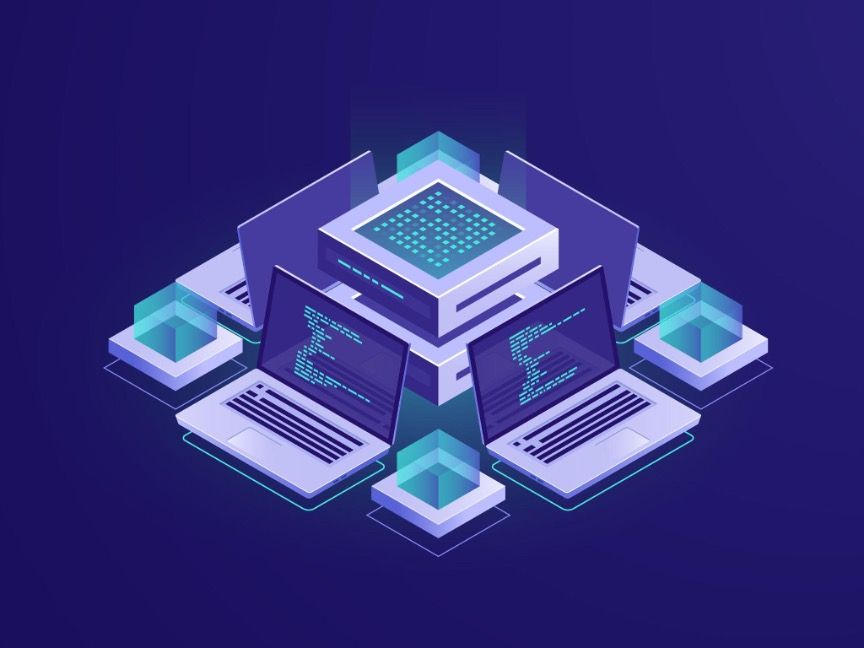Leveraging CI/CD Pipelines and Infrastructure as Code for Maximum Efficiency
Are you a member of a DevOps or Cloud Platform team looking to increase efficiency while maintaining quality? Are you looking for ways to speed up the process of deploying applications and making changes to existing ones? If so, then harnessing the power of CI/CD and Infrastructure as Code (IaC) may be just the ticket. In this blog post, we’ll explore what these two powerful technologies can offer in terms of improving efficiency and streamlining your software development process.

What is Infrastructure as Code in CI/CD Pipeline?
Infrastructure as Code (IaC) is a set of techniques used to set up and configure cloud infrastructures like Amazon Web Services (AWS) in a declarative way. It enables DevOps teams to manage infrastructure with the same release pipelines, versioning, and agility as with source code. This makes Infrastructure as Code a powerful tool for efficiency, allowing developers to quickly deploy infrastructure using code. Additionally, when changes are made, older versions are kept, enabling CI/CD processes that move quickly and adhere to best practices. When combined with GitOps, IaC and CI/CD enable version control and collaboration for maximum efficiency.
CI/CD in the infrastructure domain
Continuous Integration/Continuous Delivery (CI/CD) is a powerful tool when used in the infrastructure domain. This is because it allows engineers to quickly and easily manage large-scale infrastructures with minimal effort. CI/CD enables teams to provision, configure, and deploy infrastructure as code, making it easier to manage complex systems. Using CI/CD, teams can quickly and easily create reproducible environments, ensuring that the same code works in different environments. This makes it easier for engineers to make changes quickly and efficiently, making their job easier and more efficient. Additionally, CI/CD allows teams to automate processes such as test automation, merging codes and testing builds, making their workflow more efficient. By harnessing the power of CI/CD and Infrastructure as Code (IaC), DevOps teams can maximize their efficiency and productivity while ensuring their code is secure and reliable.
Why CI/CD with Infrastructure as Code is different than CI/CD for Application Development
Continuous Integration/Continuous Delivery (CI/CD) and Infrastructure as Code (IaC) are two powerful technologies used in software development and infrastructure management. While both processes are similar, they have distinct differences and require different approaches when implemented. CI/CD for application development focuses on the process of automatically building, testing, and deploying applications, while CI/CD for IaC focuses on the process of automating the provisioning of cloud services, configuring them, and deploying changes to those services. CI/CD with IaC requires a different set of tools than CI/CD for application development, such as IaC configuration languages like Terraform and CloudFormation. Additionally, IaC brings additional challenges such as environment drift that must be addressed when working with IaC pipelines. To ensure successful CI/CD with IaC implementation, organisations must ensure that their Security and DevOps teams collaborate to proactively identify and remediate any potential security risks associated with the process.
Why DevOps Needs Infrastructure as Code?
Infrastructure as Code (IaC) is an important part of DevOps. It helps developers and operators work together by giving them a common language. IaC lets DevOps teams automate the provisioning and changes to cloud infrastructure by moving infrastructure governance to a central location and using the power of CI/CD pipelines to manage infrastructure for changes. This increases efficiency and cuts down on mistakes. With IaC, organisations can better support their business goals by automating the provisioning and management of IT resources. This lets them focus on more important tasks.
Infrastructure as Code is CODE
Despite the fact that code is right there in the name, it's not uncommon for operations professionals to treat IaC as another script in their arsenal, stowed away in someone's home directory and shared via file shares across the organization. To make the most of IaC's power, though, we need to treat it like a software development process.
How to implement CI/CD for IaC in practice?
Before organisations can use CI/CD for Infrastructure as Code (IaC), they need to make sure their code is versioned and stored in a repository, such as Git. This allows for code to be tracked and changes to be made quickly and easily. Additionally, organizations should automate scanning and testing for syntax errors, logical validation, and security best practices such as replacing hard-coded secrets with environment variables stored in the CI/CD pipeline. This will increase security by preventing secrets from being leaked or exposed. Finally, organizations must ensure their pipelines are automated and that deployment is triggered when code is merged into the main branch. All these steps will help to ensure that the infrastructure is managed efficiently and securely with IaC and CI/CD pipelines.
Conclusion
Infrastructure as Code (IaC) is a powerful way to automate the provisioning and configuration of IT infrastructure. With CI/CD, DevOps teams can easily and quickly set up pipelines that make it easier for them to develop and deploy changes. By leveraging IaC, teams can move at a much faster pace, ensuring that old versions are kept as new changes are deployed. Using IaC can help make sure that the code and infrastructure are better and more stable, which will make customers happier. It also gives you a chance to make workflows more efficient and reduce the amount of manual work needed for infrastructure management tasks.
